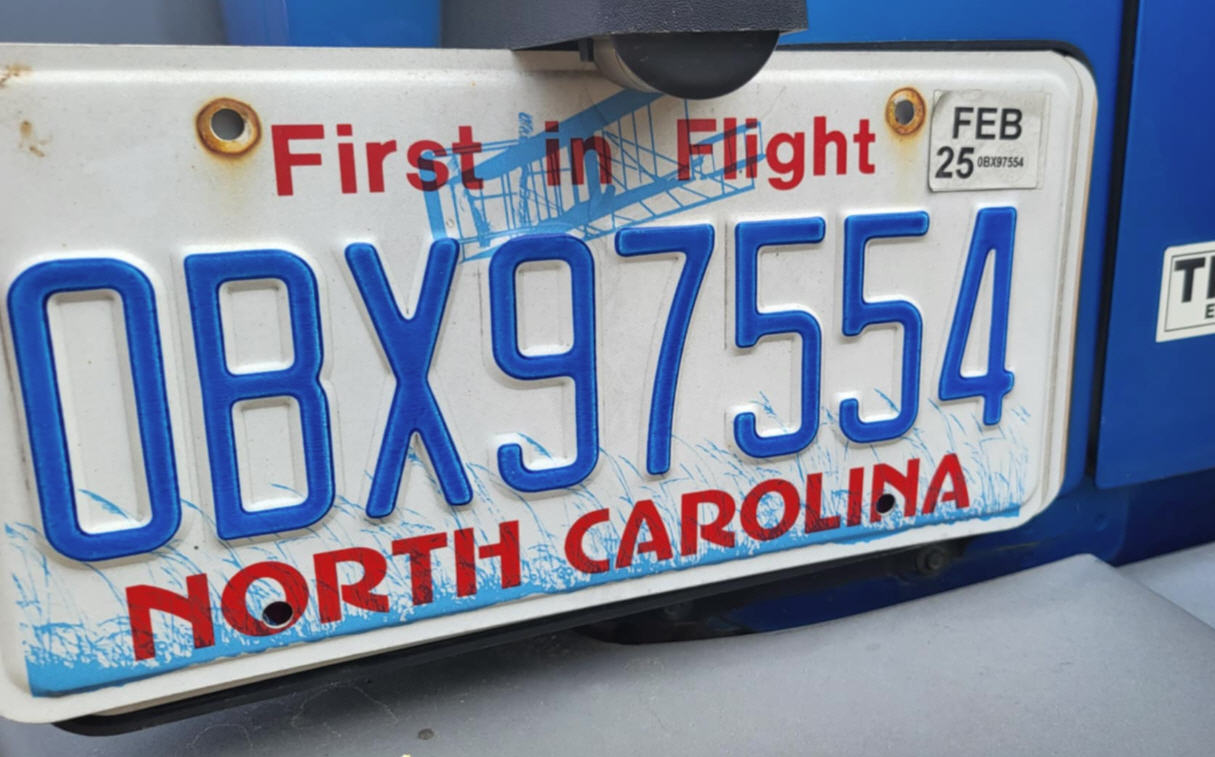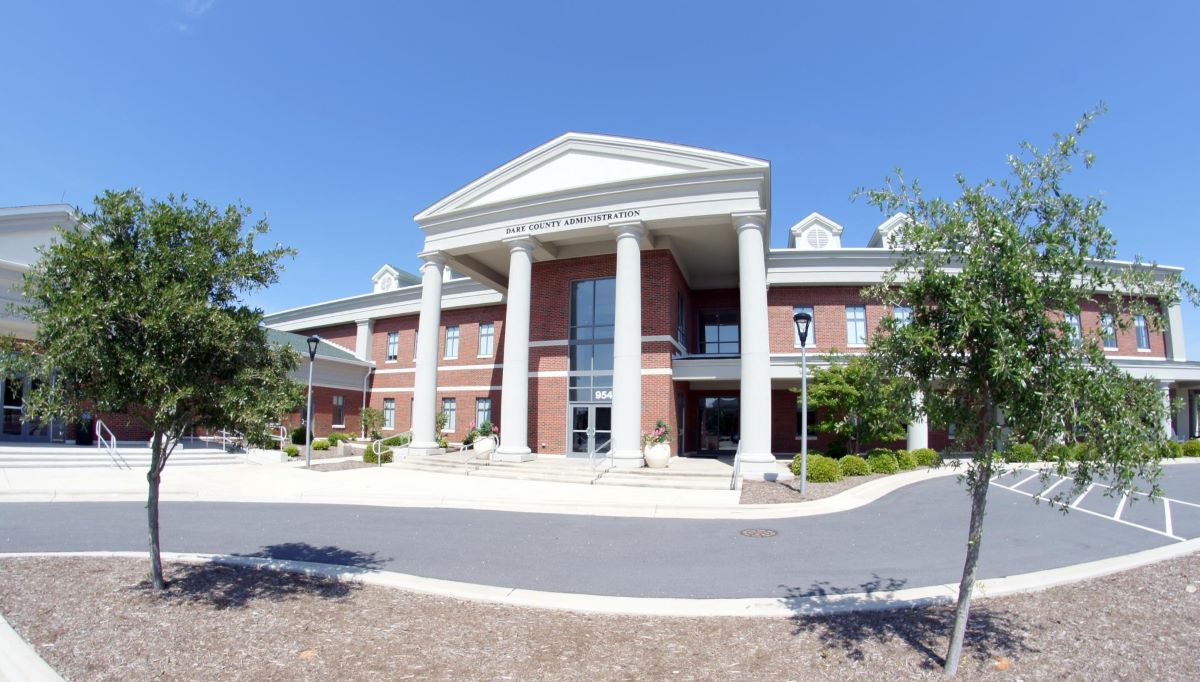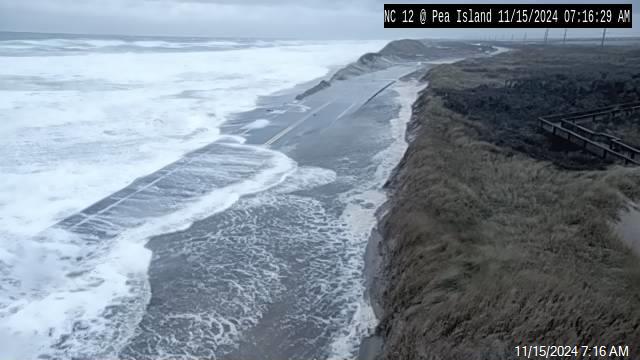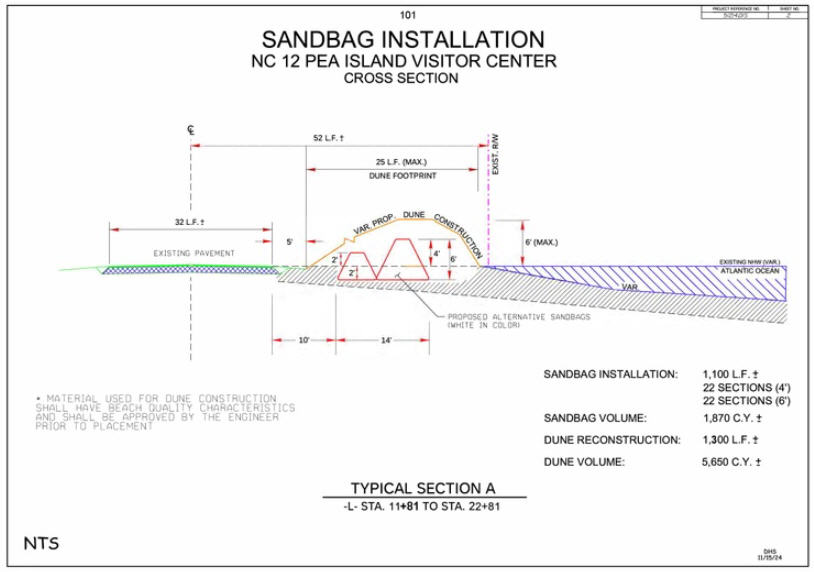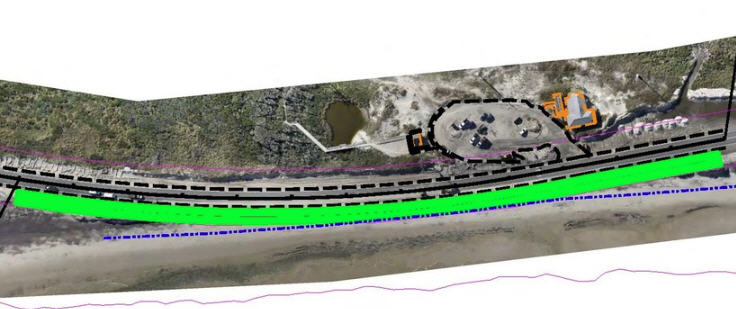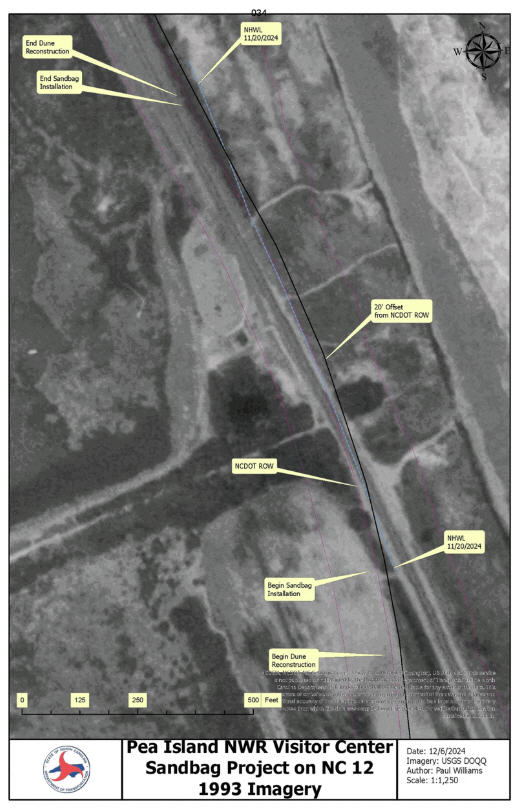UPDATE: Another dredge will try clearing sand out of ferry channel
Consecutive surveys of the traditional Hatteras-Ocracoke ferry route illustrate the alarming rate of shoaling in Rollinson Channel, especially at the location in the federal navigational channel where utility lines are buried.
“Even from the last month’s survey, it’s showing more deterioration,” said state Ferry Division Deputy Director Jed Dixon. “That section has to be addressed one way or another.”
In the meantime, Dixon said, ferries will continue to use an alternate channel that takes about 20 minutes longer, but otherwise has no issues. The half-hour summer schedule started today, with two extra vessels added to help prevent backups.
‘Until it gets touched up some more,” he said about the shorter channel, “we really don’t have any other option.”
An Army Corps pipeline dredge had left at the end of April after working in the channel since late December. But even the April survey taken after the dredging revealed the already extensive shoaling at one crook in the channel.
The most recent survey by the Corps of Engineers completed May 1 showed that an area by Buoy 11B and Buoy 12A was not dredged to the authorized depth of 10 feet because of sub-marine electrical cables, according to an e-mail from Corps spokeswoman Ann Johnson.
“Our navigation experts are in the process of determining solutions for this trouble spot,” she wrote, “and are coordinating with Tideland Electric to better identify the location and depths of the power lines to Ocracoke.”
The Corps’ dredge Murden is expected to arrive at Hatteras Inlet on about May 18 to clear the shoaled area at the “pinch point,” she said.
The dredge will work for about six days. The project will cost about $115,000 and will be covered by Hurricane Sandy Relief Funds.
Starting in March, the survey maps — with red translating to roughly 4- to 6-feet deep, yellow 6- to 8-feet; green 8- to 12-feet; and blue 12- to 15-feet or deeper – showed more red at the troublesome spot.
By May, the red sections on both sides of the spot in the channel looked as if they were nearly meeting, making it dangerously narrow.
Boaters and ferry captains have noticed progressive shoaling in Hatteras Inlet since Hurricane Irene in 2011. The problem got even worse after Hurricane Sandy in October, which was followed by several northeasters.
“It’s a very volatile area,” Dixon said. “The channel is a lot different around the inlet than it was three years ago.”
Dixon, who worked as a ferry captain in Hatteras Inlet for seven years, said no one has been able to pinpoint the reason for the vast amount of sand moving into the inlet. But he guesses it might be related to the rapidly eroding tip of Hatteras Island, which appears to have lost about 150 yards in recent years.
“It looks to me
that sand from that erosion is getting into that channel,” he said. “We’re experiencing shoaling in the channel where we never had it before.”
Click here to see the latest hydrographic images of depths in the Hatteras Inlet ferry channel.






